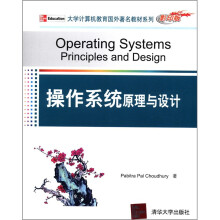Preface
Acknowledgements
1 INTRODUCTION TO THE OPERATING SYSTEM
1.1 0S Functions
1.1.1 0S Acts as a User/Computer Interface
1.1.2 Interaction with OS
1.1.3 0perating System Commands
1.1.4 0perating System as Efficient Resource Manager
1.1.5 0S Upgrading
1.1.6 0perating System Security and Protection
1.2 Evolution of Operating System
1.2.1 Serial Processing
1.2.2 Batch Processing
1.2.3 Multiprogramming or Simple Concurrent Processing
1.2.4 Resource Management
1.2.5 0perating System Structure
1.2.6 Future Operating System Trends
Summary
Exercises
2 0S PREREQUISITES
2.1 Important Software Resources to be Managed by OS
2.2 Interaction with OS in Mainframe Systems (Interrupts in General)
2.2.1 The Program Status Word
2.2.2 Different Fields of PSW
2.2.3 Controlling I/O
2.2.4 The Interrupt Concept
2.2.5 Interrupt Priority
2.2.6 What Other Manufacturers (Other than IBM) Do?
2:2.7 Interrupt Cycle
2.2.8 Differences between Subroutine Call and Interrupt Scheme
2.3 Example from PC Environment and Related Discussion
2.3.1 Different Ways to Control PC Hardware
2.3.2 Accessing the BIOS and DOS
2.4 Current 'State-of-the-Art' Scenario in OS Design
2.5 Fundamental Concepts Related to IPC
2.5.1 Message Queues
2.5.2 Semaphores
2.5.3 Shared Memory
Summary
Exercises
3 CONCURRENT PROCESSING
3.1 Introduction to Concurrent Processing
3.2 Process Concept
3.3 Introduction to Process Control Block
3.4 Interaction of User's Process with the System
3.4.1 Exec sys
3.5 Introduction to Concurrent Program
3.6 Distinction between a Procedure Call and a Process Creation
3.7 Introduction to Process Environment
3.7.1 Introduction to Process id
3.7.2 Shells or Command Interpreter
3.8 Process State Transitions
3.9 Difference between User, Daemon and Kernel Processes
3.10 Interprocess Communication
3.10.1 File and Record Locking
3.10.2 Simple Pipes and Named Pipes
3.10.3 Pipes and Sockets
3.11 Hierarchy of Processes
3.11.1 Process Creation
3.11.2 Processes and Threads
Summary
Exercises
4 SCHEDULING
5 DISUSSION ON CONCURRENCY CONTRL
6 DEADLOCK
7 MAIN MEMORY MANAGEMENT
8 VIRTUAL MEMORY TECHNIQUE
9 SPOOLER AND DISK SCHEDULNG
10 FILE SYSTEM ARCHITECTURE
11 DEVICE DRIVER FOR OPERATING SYSTEM
12 LINUX KERNEL AND SECURITY
13 ROLE OF OS TOWARDS LOW POWER DESIGN

 缺书网
缺书网 扫码进群
扫码进群





